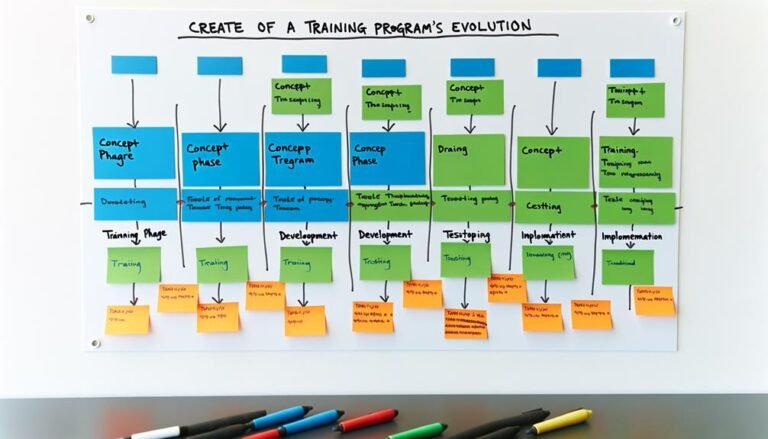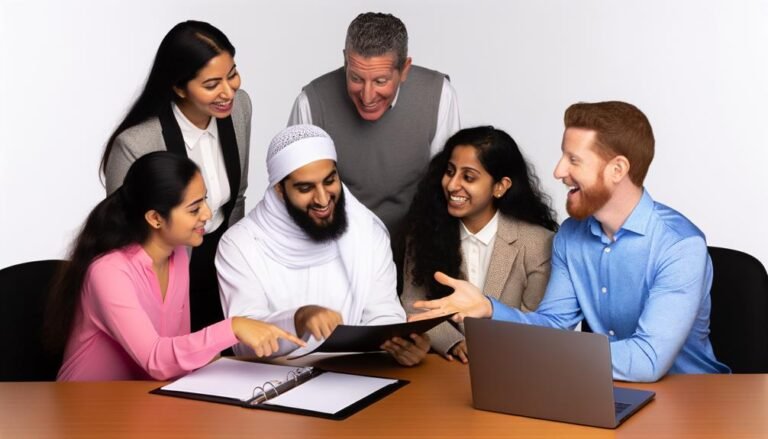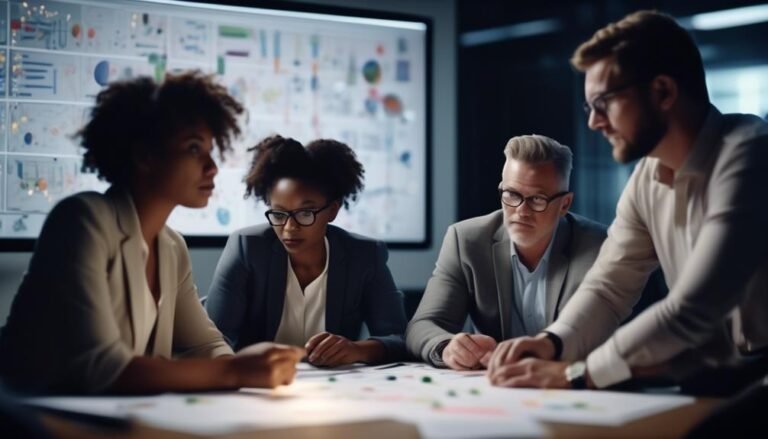Is Human Thinking Just Like Computers
As we ponder the complexities of human cognition, it's intriguing to note that the human brain contains approximately 86 billion neurons. This vast neural network forms the basis of our thinking processes and memory functions.
But, are our cognitive processes truly akin to those of computers? Join us in exploring this thought-provoking question as we navigate through the realms of cognitive psychology, social influences, instructional design, and the interplay between learning and society.
Let's unravel the mysteries of human thinking and its potential parallels to the computational mechanisms of computers.
Key Takeaways
- Human thinking is likened to computers in memory processing.
- Cognitive psychology aids in understanding memory complexities.
- Social factors influence cognition beyond traditional views.
- Instruction design benefits from cognitive psychology insights.
Cognitive Psychology and Information Processing
Examining the cognitive psychology perspective on information processing reveals a fundamental parallel between human thinking and computer operations. Memory encoding plays a vital role in how information is processed and stored in the human mind. Neural connections are key in forming memories and retrieving them when needed.
Research shows that memory isn't a passive process but rather an active construction influenced by various factors. Understanding how neural connections are strengthened through encoding helps in enhancing memory retention.
Cognitive psychology sheds light on the intricate mechanisms involved in memory processes, highlighting the similarities between human cognition and computer information processing. This insight aids in optimizing learning strategies and designing effective memory-enhancing techniques.
Social Influences on Human Cognition
Social factors intricately shape and mold human cognition, impacting how individuals process information and engage in learning experiences. Cultural factors play a significant role in cognitive development, influencing the way individuals perceive and interpret information.
Social learning environments provide opportunities for individuals to acquire knowledge through interactions, feedback, and observation of others. Memory formation is also influenced by social experiences, with social interactions and relationships impacting memory encoding and retrieval processes.
Understanding the social context in which learning takes place is crucial for designing effective instructional strategies that consider individual and social learning contexts. By acknowledging the impact of social influences on cognition, we can better appreciate the complexity of human learning and memory formation.
Instruction Design and Cognitive Insights
The impact of social influences on cognition underscores the importance of integrating cognitive insights into instructional design strategies for optimal learning outcomes. Memory encoding plays a crucial role in instructional design, as it influences how information is processed and stored.
Understanding memory encoding allows for the creation of learning materials that are more likely to be retained by learners. Moreover, considering social learning dynamics in instruction design is essential. Social interactions, feedback, and collaborative learning environments all contribute to effective learning experiences.
Learning as a Social Process
Learning, as we navigate the intricate web of knowledge acquisition, is inherently intertwined with the fabric of our social interactions and experiences. Social interactions play a crucial role in shaping our learning processes, influencing how we acquire, process, and retain information. Group dynamics, feedback from peers, and collaborative learning environments all contribute to our cognitive development.
| Social Interactions in Learning | Group Dynamics | Impact on Learning |
|---|---|---|
| Peer collaboration and discussions | Leadership roles and communication | Enhanced understanding and retention |
| Feedback mechanisms and knowledge sharing | Conflict resolution and decision-making | Diverse perspectives and critical thinking |
| Social learning environments and community support | Participation levels and engagement | Motivation and knowledge application |
Understanding the influence of social interactions and group dynamics on learning is essential for creating effective educational strategies and fostering a conducive learning environment.
Critiques of Traditional Cognition Views
Critics have challenged the traditional views of cognition by highlighting its limitations and advocating for a more comprehensive understanding of human thinking processes.
Donald Norman, for instance, critiques the traditional information processing perspective by emphasizing the influence of social, cultural, and personal factors on human cognition.
This critique underscores that learning isn't solely about encoding and storing information but is deeply intertwined with social interactions, feedback mechanisms, and the presence of misconceptions.
To truly grasp learning effectiveness, one must consider the interplay between individual and social factors, recognizing that human cognition is shaped by a multitude of influences beyond mere information processing.
This broader perspective is crucial for designing instruction that maximizes learning outcomes and real-world application.
Interplay Between Learning and Society
In exploring the dynamic relationship between learning and society, we uncover intricate layers of influence that shape cognitive processes and educational outcomes. Learning dynamics are significantly impacted by societal factors, shaping how individuals acquire, retain, and apply knowledge. The interplay between learning and society is crucial in understanding the effectiveness of educational interventions and cognitive development. Societal impact on learning dynamics can manifest through cultural norms, access to resources, and social interactions, all of which contribute to shaping individual learning experiences. Consideration of societal influences is essential in designing effective learning environments that cater to diverse needs and enhance educational outcomes.
| Learning Dynamics | Societal Impact |
|---|---|
| Cultural norms | Influence learning styles |
| Access to resources | Shape educational opportunities |
| Social interactions | Impact knowledge acquisition |
| Diverse needs | Enhance learning outcomes |
Notable Authors and Their Perspectives
Exploring the intersection of learning dynamics and societal influences reveals the distinct perspectives of notable authors on cognition and memory. Memory theories and neural networks are central to understanding human thinking.
- Memory Theories: Various authors delve into the complexities of memory, emphasizing the importance of connections, value, and retrieval frequency.
- Neural Networks: Insights from authors like Norman and Oxenham shed light on how neural networks play a crucial role in memory processes.
- Cultural Factors: Authors highlight the impact of social, cultural, and personal factors on cognition and memory.
- Learning as a Social Process: Understanding learning involves considering social interactions, feedback, and misconceptions.
- Instruction Design: Authors stress the significance of designing instructions that facilitate easier application and retention of knowledge.
Technology, Learning, and Neural Networks
Technology enhances learning efficiency through the integration of neural networks, revolutionizing cognitive interactions and knowledge retention. Artificial intelligence plays a crucial role in education by personalizing learning experiences and adapting to individual needs. Brain plasticity, influenced by technology, highlights the brain's ability to reorganize itself and form new neural connections based on learning experiences. This dynamic process is essential for acquiring and retaining information effectively. Integrating technology in education facilitates interactive learning tools that stimulate neural pathways, promoting active engagement and knowledge assimilation. By leveraging neural networks, educators can create immersive learning environments that cater to diverse learning styles, fostering a deeper understanding of complex concepts.
| Artificial Intelligence | Education | Brain Plasticity |
|---|---|---|
| Personalizing learning experiences | Adapting to individual needs | Forming new neural connections |
| Interactive learning tools | Stimulating neural pathways | Fostering a deeper understanding |
Conclusion
In conclusion, after delving into the intricate realm of human cognition and its comparison to computers, we're left with a sense of irony.
While we've explored the parallels between the two, it becomes evident that the complexity and nuances of human thinking far surpass the capabilities of any machine.
The interplay between individual learning processes, social interactions, and cultural influences adds layers of depth that can't be replicated by mere algorithms and data processing.







